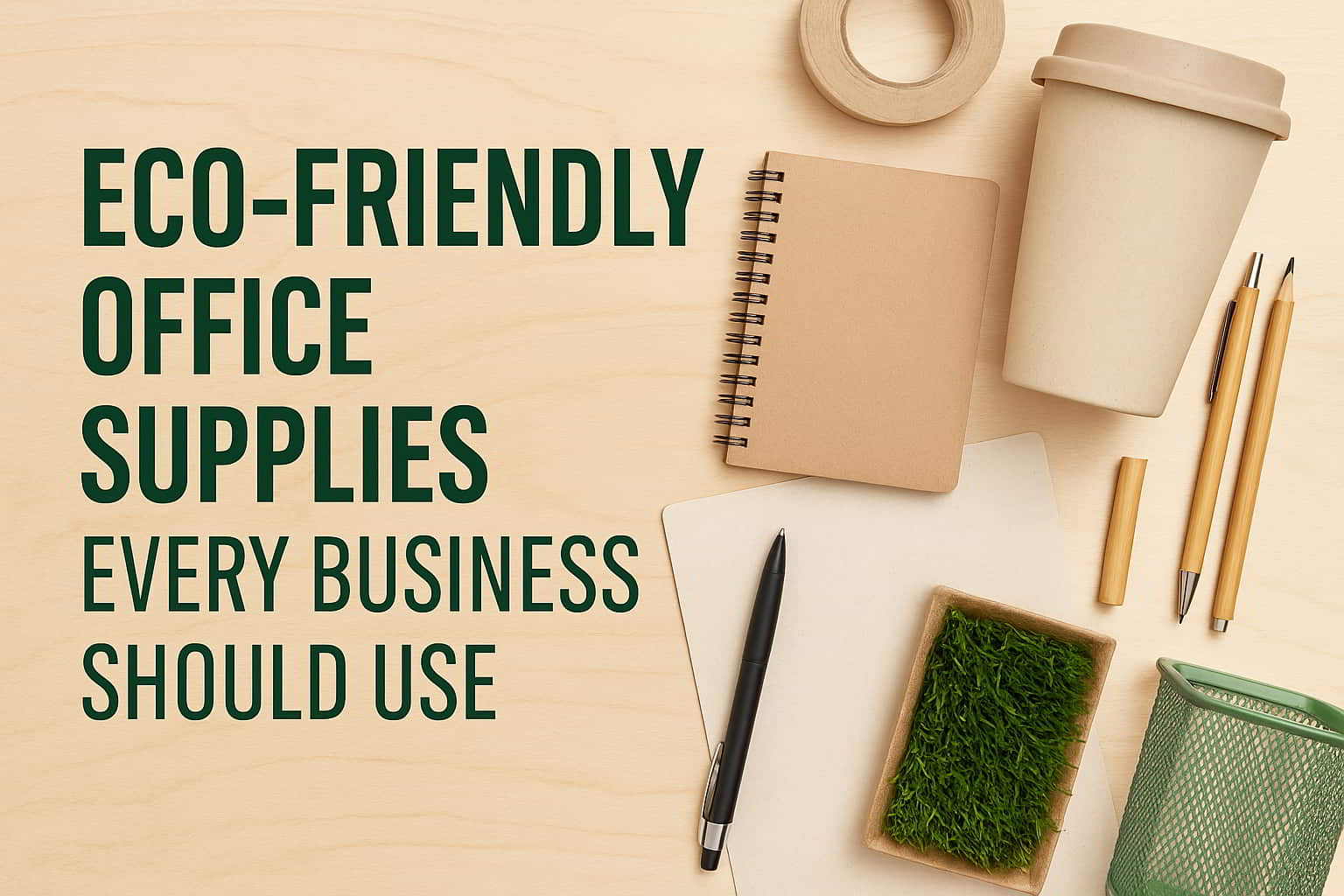Why Sustainable Office Supplies Matter
Sustainability has evolved from a trend into a strategic business priority. Offices that once relied on disposable materials are now turning to eco-conscious alternatives that reduce waste and reflect corporate responsibility. Every purchase from paper to packaging shapes not only environmental impact but also brand perception.
Adopting sustainable supplies is more than a gesture toward the planet; it’s a long-term investment in efficiency and cost control. According to the U.S. Department of Energy, switching to LED lighting can reduce electricity costs by up to 75% compared to traditional bulbs. Similarly, using remanufactured toner cartridges can cut plastic waste by 50% per employee each year. Eco-smart decisions make financial sense – and demonstrate forward-thinking leadership.
Modern sustainability strategies align with recognized frameworks such as ISO 14001 Environmental Management Systems, the EU Green Deal, and the Circular Economy Action Plan. For companies pursuing measurable impact, certifications like B Corp or Cradle to Cradle help ensure continuous improvement across the supply chain.
Paper and Stationery with a Smaller Footprint
Paper remains central to office operations, but its production is resource-intensive. Today’s alternatives – including FSC-certified and Blue Angel-labeled products – make it easy to reduce that footprint. These standards guarantee responsible forestry and low-emission production.
Reusable notebooks such as Rocketbook or bamboo-fiber paper blends combine traditional note-taking with digital convenience. Businesses that adopt chlorine-free paper or recycled print materials can save thousands of liters of water and significantly lower CO₂ output each year.
Refillable and Recycled Writing Tools
Disposable pens and markers are among the most common sources of office waste. Brands like Pilot B2P and Pentel Recycology now produce pens made from reclaimed ocean plastics, proving that high performance and sustainability can coexist.
For teams that rely on frequent brainstorming, refillable whiteboard markers with water-based ink reduce volatile compounds and plastic disposal. It’s a small switch that signals environmental commitment while maintaining everyday usability.
Energy-Efficient Equipment and Digital Sustainability
Sustainable offices look beyond stationery to the digital layer of their operations. Energy-efficient printers, monitors, and LED lighting systems dramatically reduce electricity consumption. Smart power strips and automated sleep modes can prevent devices from consuming idle energy after hours.
As companies migrate to cloud-based tools, digital sustainability becomes part of the equation. Choosing green cloud providers that operate on renewable energy – such as Google Cloud or AWS Clean Energy initiatives – helps reduce indirect emissions. Evaluating a product’s life cycle (LCA) ensures that both production and disposal stages remain environmentally responsible.
Greener Breakrooms and Cleaning Supplies
Sustainability extends into the breakroom, where single-use plastics often dominate. Switching to bamboo cutlery, glass mugs, and refillable dispensers is an immediate improvement. Compostable coffee pods and biodegradable trash liners support a low-waste culture without disrupting convenience.
Even cleaning supplies have greener alternatives. Refillable bottles, eco-certified detergents, and microfiber cloths reduce chemical runoff and packaging waste. Establishing clearly labeled recycling bins for glass, paper, and organic waste helps employees participate actively in sustainability goals.
Sustainable Packaging and Shipping
Companies involved in shipping or logistics can make meaningful reductions in waste through recycled cardboard, paper tape, and compostable mailers. Opting for minimal packaging designs and local sourcing further decreases emissions from transport.
Many organizations now align these initiatives with circular economy principles, reusing materials whenever possible and designing packaging for easy recycling. For external communication, using packaging that features eco-labels or recycled content percentages reinforces transparency and trust.
Building a Zero-Waste Workplace
Creating a zero-waste office is an ongoing process of optimization, not perfection. It starts with supply choices and extends into culture. Internal campaigns such as Green Office Week or departmental sustainability challenges encourage participation and awareness.
Each initiative – from energy-efficient lighting to refillable pens – contributes to a measurable reduction in waste and emissions. The result is a workspace that saves resources, strengthens team morale, and supports a reputation for responsible innovation. In a business landscape increasingly shaped by accountability, eco-friendly offices are the new standard of smart operations.
